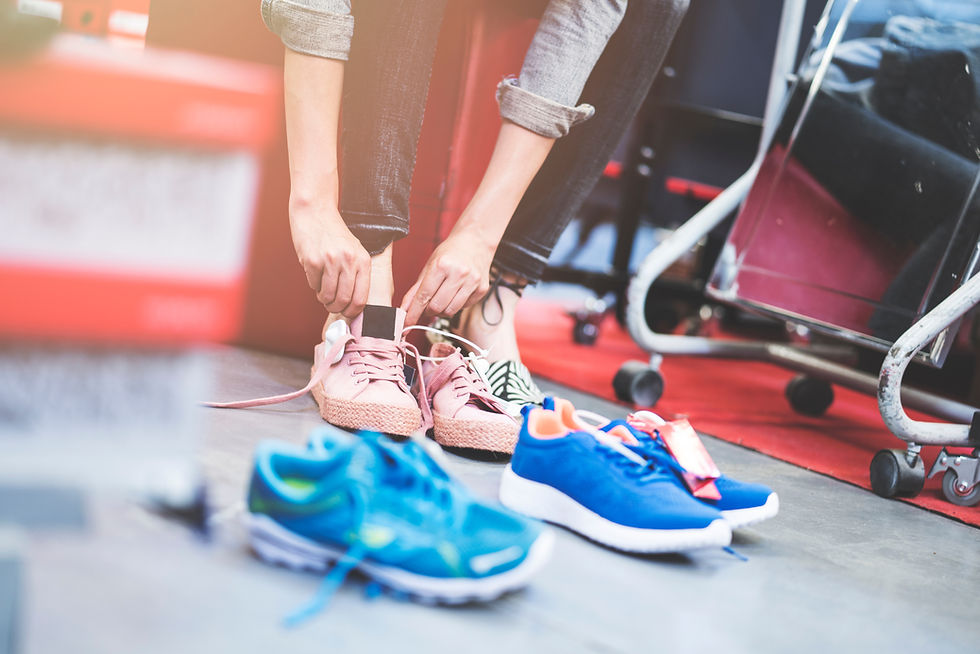Why Do Bunions Hurt? Understanding the Causes and How to Find Relief
- yourbesttoe
- Jul 16
- 4 min read
Updated: Jul 23

If you have bunions, you already know how frustrating and painful they can be. Bunions don’t just change how your feet look, they can make it hard to find shoes that fit, make it painful to exercise, or even go for a walk. So, let’s talk about why do bunions hurt, and what can help.
This guide explains in simple, real-world terms, with no complicated medical jargon, what’s really happening and what you can do to make your feet and bunions feel better.
What Is a Bunion, Anyway?
A bunion is that bony bump that forms at the base of your big toe. (Source: Mayo Clinic). It happens when the bones in your foot shift out of place, which makes your big toe lean toward your other toes instead of pointing straight ahead. Over time, the joint at the base of the big toe sticks out, and that’s what creates the bunion. Bunions can be small or large, and they tend to get worse over time if they’re not managed.
Why Do Bunions Hurt?
Bunions hurt because of pressure, friction, and changes to how your foot works when you walk. If you’re wondering why do bunions hurt so much, it really comes down to these factors:
Pressure from shoes: When you have a bunion, tight shoes can press right on that bump. Even shoes that fit you in the past might start to feel uncomfortable because of the change in your foot shape.
Friction: The skin over the bunion can rub against your shoes, causing redness, swelling, and soreness. That rubbing can even lead to blisters or calluses.
Joint inflammation: The joint at the base of your big toe can get irritated and inflamed. When this happens, even soft shoes might feel uncomfortable.
Changes in balance: Bunions can change the way your foot hits the ground when you walk. This adds to the soreness you’re feeling and can put extra strain on other parts of your foot, even your ankles, knees, or hips.
Extra stress on the toes: When your big toe leans over, it can crowd your other toes and lead to issues like corns, hammertoes, or general soreness.
What Makes Bunion Pain Worse?
We’ve talked about why bunions hurt, now let’s go over a few things you may be doing that make bunion pain worse. Here are a few easy things you can avoid to help your bunion pain:
Wearing tight or narrow shoes, especially pointy-toe styles
Long days on your feet without breaks
High heels that force weight onto the front of your foot
Skipping supportive insoles or going barefoot on hard floors
A Few Simple Ways to Find Relief
Now that you know what causes bunion pain and makes the pain worse, here are things you can try at home to reduce or even relieve bunion pain. These are ideas I’ve found helpful, and what other bunion-sufferers swear by:
Choose shoes that work with your bunions
Look for shoes with:
Wide or stretchable toe boxes
Soft, flexible materials that don’t rub
Low heels or no heels at all
Removable insoles so you can add your own support if needed
When buying new shoes, try them on at the end of the day when your feet are a little swollen, that’s when you’ll get the most realistic fit. Also, check out our Bunion Friendly Shoe Reviews at YourBestToe.com. We've tested so many options, so you don’t have to waste time. You might also like our guide on How to Spot a Bunion Friendly Shoe in 10 Seconds.
Other ways to find relief from bunion pain
Use padding or cushions: Gel pads, moleskin, or bunion cushions can help reduce friction and ease pressure on that bony bump. These are easy to find at most drugstores or online.
Try gentle foot soaks: Soaking your feet in warm water with Epsom salts can help relax sore muscles and reduce swelling.
Regularly do bunion friendly foot exercises: Simple stretches can help keep your toes flexible and your feet feeling better. One easy stretch: use your fingers to gently stretch your big toe away from the other toes, holding for a few seconds at a time.
Give your feet breaks during the day: If you’re on your feet a lot, try to sit down and take the pressure off your feet whenever you can. Even a few short breaks can help.
You’re Not Alone and You Can Find Relief
Bunions can be a pain, but small changes can make a big difference. The key is understanding why do bunions hurt so much. That way you can make choices that keep your feet as comfortable as possible.
Note: This article is for informational purposes only and is not medical advice. If you have severe or persistent bunion pain, please consult a podiatrist or healthcare professional.
About the Author: I’m Diane Leighton, founder of YourBestToe.com. I review and test stylish, comfortable shoes for women with bunions, wide feet, and flat feet. Every shoe I recommend is tried in real life so you can skip the trial-and-error and find styles that truly fit.


Comments